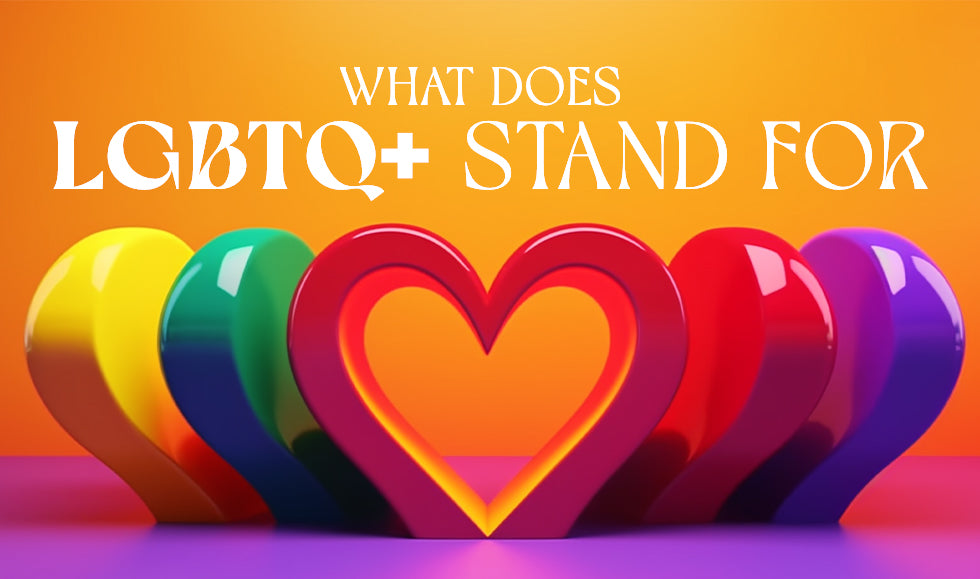The term LGBTQ has become a widely recognized symbol of inclusivity and acceptance in modern society. Representing a diverse spectrum of sexual orientations and gender identities, LGBTQ stands for Lesbian, Gay, Bisexual, Transgender, and Queer/Questioning. Understanding what LGBTQ stands for involves more than just knowing the words behind the acronym; it means appreciating the unique experiences, challenges, and contributions of each group within the community.
Introduction to LGBTQ
As the LGBTQ community continues to grow, and more people learn and begin to better accept this community, we need to break down this acronym, so everyone can get a better understanding.
Understanding the Acronym
LGBTQ is an acronym that represents a community of individuals who identify as lesbian, gay, bisexual, transgender, and queer or questioning. These terms collectively describe a range of sexual orientations and gender identities that differ from the heterosexual and cisgender majority. Each letter in the acronym holds significant meaning and represents distinct identities and experiences within the broader community. Understanding these terms helps promote empathy, respect, and inclusivity for all individuals, regardless of their sexual orientation or gender identity.
Breaking Down LGBTQ
Now that you know what the actual acronym is, let’s further break down each letter, shall we.
L is for Lesbian
A lesbian is a woman who is emotionally, romantically, or sexually attracted to other women. The term "lesbian" originates from the Greek island of Lesbos, home to the ancient poet Sappho, who wrote about her love for other women. Lesbians have historically faced discrimination and marginalization, often being excluded from both mainstream society and male-dominated gay spaces. However, lesbian identity and culture have flourished, giving rise to a vibrant community with its own literature, art, and activism. Prominent figures like Audre Lorde and Ellen DeGeneres have played crucial roles in advocating for lesbian rights and visibility.
G is for Gay
Gay is a term used to describe individuals who are attracted to members of the same sex. While it can refer to both men and women, it is more commonly used to describe men who are attracted to other men. The gay rights movement has a long and storied history, with significant milestones such as the Stonewall Riots in 1969, which marked a turning point in the fight for LGBTQ rights. Gay individuals have faced significant challenges, including legal discrimination, social stigma, and violence. Despite these obstacles, the gay community has made remarkable strides in achieving equality and acceptance, with same-sex marriage now legal in many parts of the world.
B is for Bisexual
Bisexual individuals are attracted to more than one gender. This can include attraction to both men and women or to people of various gender identities. Bisexuality is often misunderstood and misrepresented, with bisexual individuals sometimes facing skepticism or invalidation from both heterosexual and homosexual communities. This phenomenon, known as "bisexual erasure," can contribute to a sense of isolation and invisibility. Despite these challenges, bisexual individuals have a rich history of activism and advocacy, working to ensure that their unique experiences and needs are recognized and addressed within the broader LGBTQ community.
T is for Transgender
Transgender is an umbrella term for individuals whose gender identity differs from the sex they were assigned at birth. This can include trans men (individuals assigned female at birth who identify as male), trans women (individuals assigned male at birth who identify as female), and non-binary individuals (those who do not exclusively identify as male or female). The transgender community has historically faced significant discrimination and violence, often struggling for basic recognition and rights. However, there have been significant advancements in recent years, with increasing visibility and acceptance of transgender individuals in media, politics, and society at large. Transgender activists like Marsha P. Johnson and Laverne Cox have been instrumental in advocating for transgender rights and visibility.
Q is for Queer/Questioning
The term "queer" has a complex and evolving history. Originally used as a derogatory term, it has been reclaimed by many within the LGBTQ community as a broad and inclusive identifier. Queer can describe individuals who do not conform to traditional notions of gender and sexuality, encompassing a wide range of identities and experiences. It serves as an inclusive term for those who feel that other labels do not fully capture their identity. "Questioning" refers to individuals who are exploring their sexual orientation or gender identity and have not yet settled on a specific label. This period of exploration is a natural and important part of many people's journeys towards self-understanding and acceptance.
LGBTQ Has More Meaning That You Think!
As you can now see, the LGBTQ acronym is more than just a collection of letters; it represents a diverse and vibrant community of individuals with unique experiences, challenges, and contributions. Knowing what each letter stands for is crucial in promoting empathy, respect, and inclusivity for all individuals, regardless of their sexual orientation or gender identity. And, by acknowledging and celebrating the diversity within the LGBTQ community, we can work towards a more inclusive and accepting society for everyone.

